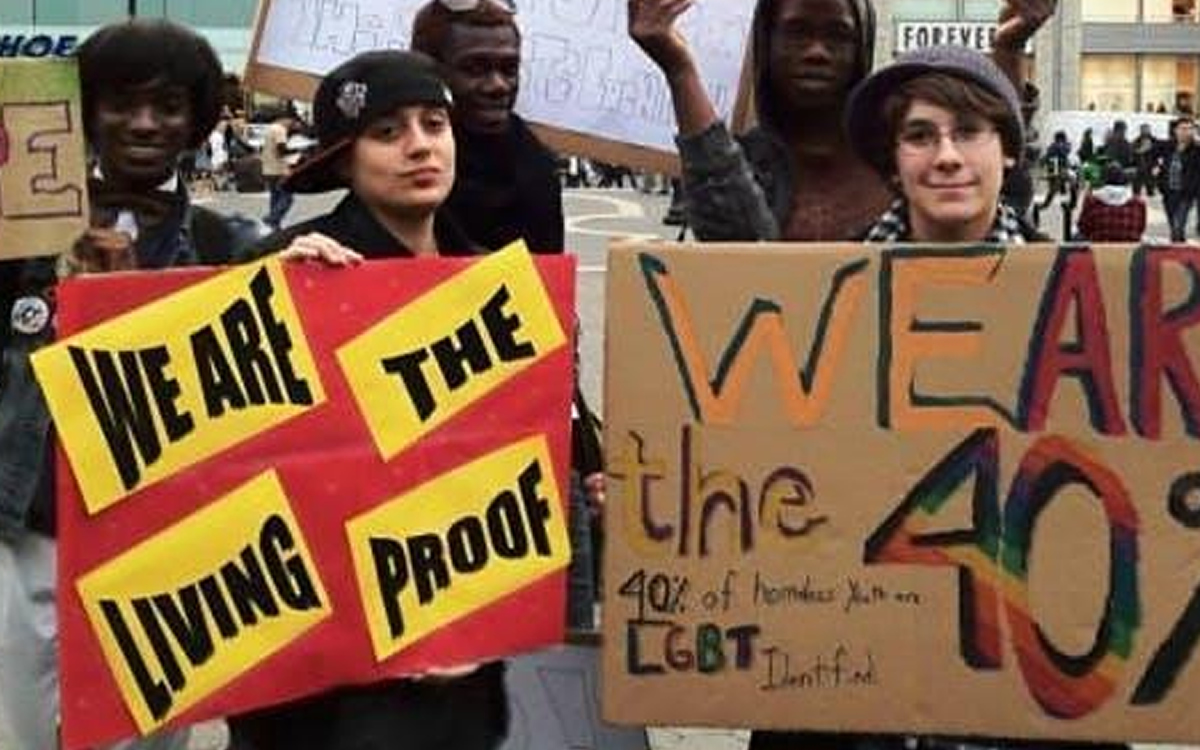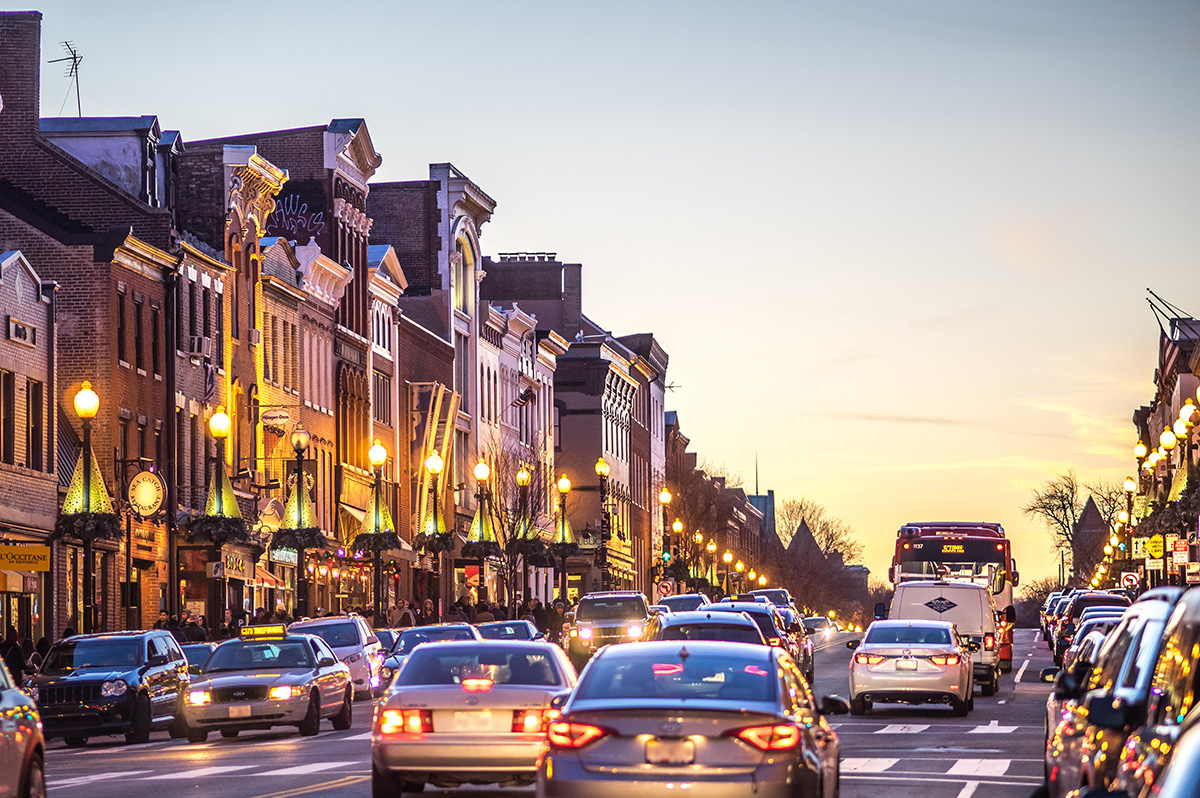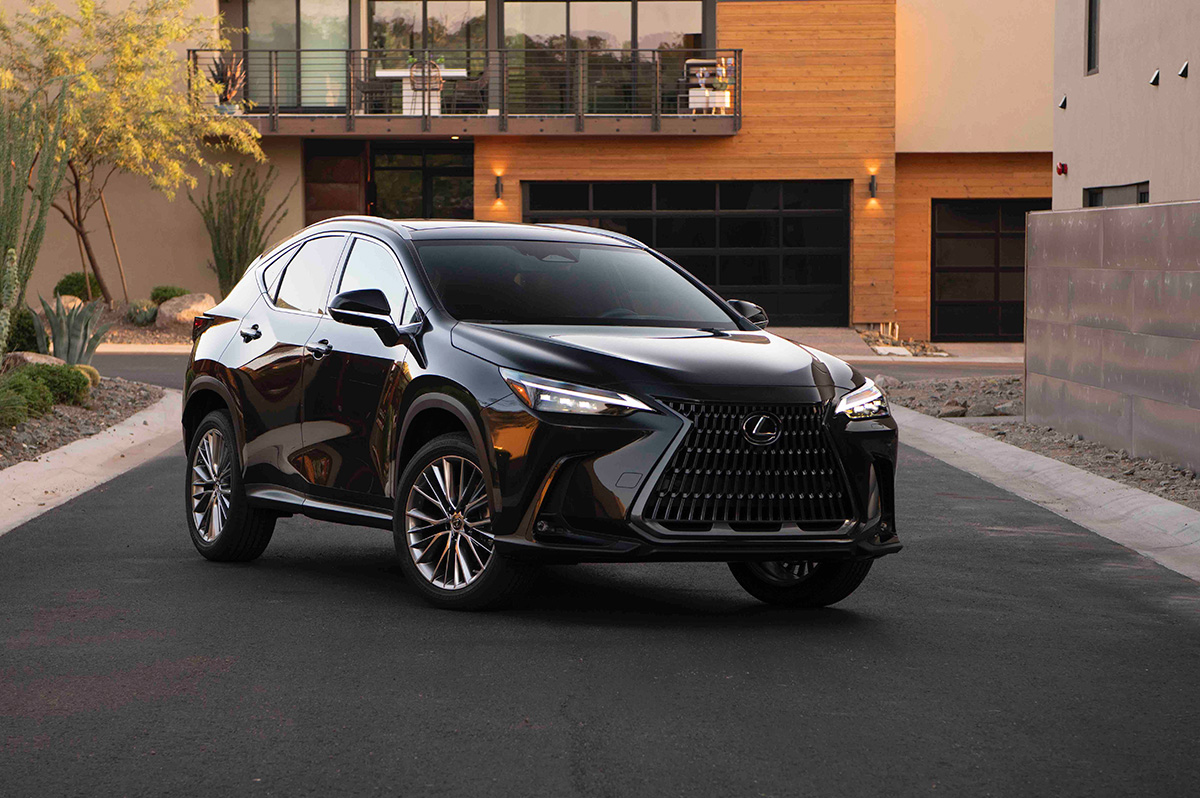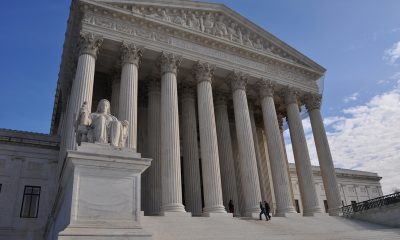Living
Combatting scourge of LGBTQ youth homelessness in D.C.
There are many local resources available to help

LGBTQ youth homelessness is a significant problem across the United States, but it is particularly acute in Washington, D.C. According to government statistics, a significant percentage of homeless youth in the country identify as LGBTQ. These vulnerable individuals face unique challenges due to their sexual orientation or gender identity, which often leads to estrangement from their families and communities.
In the lively, flashy streets of our hometown, Washington, D.C., and amid the city’s well-heeled new complexes like the D.C. Wharf in Southeast and City Centre Downtown, an alarming number of our youth find themselves without a place to call home, facing discrimination, abandonment, and societal neglect.
According to a 2022 article in DCist, “Queer and transgender youth are vastly overrepresented in the unhoused population. Nationally, 7% of people between the ages of 13 and 25 years old identify as LGBTQ+, while 40% of unhoused people of those same ages do. D.C.’s most recent Youth Count, which surveys the number of youth experiencing homelessness and housing instability, reports that the same is true in the District, with 40% of youth experiencing homelessness identifying as LGBTQ.”
Helping our youth may require more than just a simple annual or monthly donation. When you consider what you can do to help the District’s LGBTQ youth, you will want to do your homework to make sure the services you believe you are contributing to are reaching the youth in need. Below, you’ll find a few key elements to know to be informed and a few actions you can take to make a meaningful difference.
Discrimination isn’t the only cause of LGBTQ youth homelessness in our area. Several factors contribute to the high rates in Washington, D.C. One primary cause is family rejection, as many young individuals are forced out of their homes when they come out as LGBTQ.
Some families struggle to accept their child’s sexual identity or gender expression, leading to emotional or even sometimes physical abuse.
Discrimination in housing and employment also can play a significant role, making it difficult for LGBTQ youth to secure stable housing or find sustainable employment opportunities.
Additionally, the intersectionality of LGBTQ identities with race, ethnicity, and socioeconomic status may tend to exacerbate the issue.
LGBTQ youth from marginalized communities — African American and individuals of Latin American descent — are disproportionately affected by homelessness due to familial expectations and social stigma within ethnic or racial communities.
Homeless LGBTQ youth in Washington, D.C., confront numerous challenges that hinder their ability to thrive. These challenges include a lack of access to safe and affordable housing, limited educational opportunities, higher rates of substance abuse, mental health issues, and an increased risk of experiencing violence on the streets, or even exploitation.
Importance of support and resources
Addressing the scourge of homelessness for our youth requires a multi-faceted approach involving the government, community organizations, and individuals like you. The provision of safe and inclusive shelters is crucial, offering a supportive environment where young LGBTQ individuals can find refuge without fear of discrimination or harassment.
Moreover, comprehensive support systems must be established to address the unique needs of LGBTQ homeless youth. This includes mental health services, educational support, job training, and access to healthcare. Collaborative efforts between local organizations, policymakers, and the community can ensure that these individuals receive the care, resources, and opportunities they need to rebuild their lives.
Advocacy and policy changes
Advocacy plays a vital role in raising awareness and pushing for policy changes to combat LGBTQ youth homelessness in Washington, D.C. Organizations dedicated to LGBTQ rights and homelessness prevention actively work to promote inclusive policies, advocate for increased funding for support programs, and provide training to service providers to ensure they are equipped to address the specific needs of this vulnerable population.
LGBTQ youth homelessness in D.C. is an ongoing crisis that demands attention and action from individuals, organizations, and policymakers alike. Here are a few things you can do to help:
• Use Your Voice. Establish an ongoing voice in your ANC or your Ward on these matters. Reach out to your ANC commissioner if you feel your ANC can help. Start an ongoing conversation with the Constituent Services employees in your Ward member’s office and those offices of the At-Large Councilmembers. And reach out to the Mayor’s office when you have information that can help.
• Volunteer and Contribute. Volunteer your time and (when possible) financial support to organizations in the District that are making an on-the-ground difference. Volunteering can provide you a starting point to learn how the organization you seek to support operates and to see how efficient and effective they are internally at providing direct services to our youth.
• Know Your Partners. SMYAL does yeoman’s work working to establish healthy relationships with community organizations nationwide helping homeless LGBTQ+ youth. Learn about their work and see where supporting them makes sense for you. SMYAL does a lot to help housing providers exercise cultural competencies to address the needs of those homeless youth from our community. And SMYAL is just one group helping. Learn who your partners are.
So while significant progress has been made, there is still more work to be done to fully address the issue of LGBTQ youth homelessness in D.C. and nationwide. Ongoing advocacy, funding, and community involvement can be your leverage to help create sustainable solutions and ensure that all LGBTQ youth have access to safe housing, supportive services, and a chance to thrive in our great city.
Join CPM in contributing to local and national organizations focused specifically on LGBTQ+ youth homelessness such as the True Colors Foundation and SMYAL. Even the Salvation Army has a special program designed to reach our youth.
Resources and partners
True Colors Foundation. ”True Colors United,” founded by Cyndi Lauper and its executive director, Gregory Lewis focuses on addressing homelessness among LGBTQ youth. True Colors United works to raise awareness, provide resources, and support initiatives that aim to end homelessness among this population.
They collaborate with various stakeholders, including individuals, communities, government agencies, and service providers, to develop innovative solutions and implement policies that can effectively address the unique challenges faced by LGBTQ+ homeless youth. True Colors United also provides training and technical assistance to service providers, helping them create safe and inclusive environments for LGBTQ youth experiencing homelessness.
The Salvation Army. In the past, some LGBTQ activists and organizations have criticized the Salvation Army for discriminatory practices, specifically related to its treatment of LGBTQ individuals. Concerns have been raised about the organization’s position on same-sex relationships and its history of lobbying against LGBTQ rights.
It’s important to note that the Salvation Army is a decentralized organization, and its policies and practices may vary across different regions and locations. Some individual Salvation Army centers and programs may have taken steps to be more inclusive and supportive of LGBTQ individuals.
In recent years, the Salvation Army has made efforts to address concerns and improve its relationship with the LGBTQ community. They have stated that their services are available to all people, regardless of sexual orientation or gender identity.
SMYAL. SMYAL (Supporting and Mentoring Youth Advocates and Leaders) is an organization based in D.C. that focuses on supporting and empowering LGBTQ youth. While SMYAL primarily focuses on providing a range of services to LGBTQ youth, including support groups, counseling, leadership development, and advocacy, they also address LGBTQ youth homelessness.
SMYAL acknowledges that LGBTQ youth are disproportionately affected by homelessness due to various factors, including family rejection, discrimination, and lack of supportive resources. To address this issue, SMYAL offers specific programs and initiatives:
Housing Support: SMYAL provides assistance and support to LGBTQ youth who are experiencing homelessness or housing instability. They work with local partners to help youth find safe and affirming housing options, navigate the housing system, and access necessary resources.
Emergency Housing: SMYAL operates an emergency housing program known as the SMYAL House. This residential program provides temporary shelter and support services for LGBTQ youth experiencing homelessness. The program aims to create a safe and inclusive environment where youth can access resources, receive counseling, and work toward securing stable housing.
Outreach and Education: SMYAL engages in community outreach and education efforts to raise awareness about LGBTQ youth homelessness. They work to educate the public, service providers, and policymakers about the unique challenges faced by LGBTQ youth and advocate for policies and practices that ensure their safety and well-being.
Supportive Services: SMYAL offers a range of supportive services to LGBTQ youth, including case management, mental health counseling, employment assistance, and educational support. These services aim to address the underlying issues that contribute to youth homelessness and help young people build resilience and self-sufficiency.
Wanda Alston Foundation. The Wanda Alston Foundation is dedicated to ensuring that LGBTQ youth have access to services that improve their overall quality of life. Donations naturally continue their work to change the lives of LGBTQ homeless and at-risk youth for the better. Remote volunteer opportunities are available until we resume in-person volunteering. Current volunteer projects include: Social media management, website management, fundraising, policy review and development, and communications. Check out their website for ways to get involved.
Scott Bloom is senior property manager and owner, Columbia Property Management.

Did you melt like the Wicked Witch of the West this week?
As summer temperatures rise, keeping your home or apartment cool during a heat wave can become both a comfort issue and a financial challenge. One of the most effective ways to keep a home cool is to prevent heat from entering in the first place. Sunlight streaming through windows can significantly raise indoor temperatures. Consider the following solutions:
• Close blinds or curtains during the hottest parts of the day. Blackout curtains or thermal drapes can reduce heat gain by up to 30%.
• Install reflective window films to block UV rays and reduce solar heat without sacrificing natural light.
• Use outdoor shading solutions such as awnings (yes, the ones you removed because they were “dated”) and shutters to limit direct sunlight.
Fans are a cost-effective way to circulate air and create a wind-chill effect that makes rooms feel cooler.
• Ceiling fans should rotate counterclockwise in the summer to push cool air down.
• Box fans or oscillating fans can be placed near windows to pull in cooler evening air or push hot air out.
• Create a cross-breeze by opening windows on opposite sides of your home and positioning fans to direct airflow through the space.
• For an extra cooling effect, place a bowl of ice or a frozen water bottle in front of a fan to circulate chilled air.
To optimize natural ventilation, open windows early in the morning or late in the evening when outdoor temperatures drop. This allows cooler air to flow in and helps ventilate heat that built up during the day.
Appliances and electronics generate a surprising amount of heat. To reduce indoor temperatures:
• Avoid using the oven or stove during the day; opt for no-cook meals, microwave cooking, or grilling outside.
• Run heat-producing appliances like dishwashers and clothes dryers in the early morning or late evening.
• Unplug electronics when not in use, as even standby power can add heat to your space.
• Switching to energy-efficient LED lightbulbs can also reduce ambient heat compared to incandescent lighting.
If you do use an air conditioner, maximize its effectiveness by:
• Setting it to a reasonable temperature—around 76–78°F when you’re home and higher when you’re away.
• Cleaning or replacing filters regularly to maintain airflow and efficiency.
• Sealing gaps around doors and windows to prevent cool air from escaping. (Didn’t we all have a parent who said, “Close the door. You’re letting all the cool out?”)
• Using a programmable thermostat to optimize cooling schedules and reduce energy use.
If it is not cost-prohibitive, adding insulation in attics and walls can greatly reduce heat transfer. Solar panels that reflect heat can also help, as well as offset the cost of their installation. Adding weatherstripping around doors and windows, sealing cracks, and using door sweeps can make a significant difference in keeping heat out and cool air in.
Natural and eco-conscious methods can also help cool your home.
• Snake plants, ferns, or rubber trees can improve air quality and slightly cool the air through transpiration.
• White or reflective roof paint can reduce roof temperatures significantly.
• Cooling mats or bedding can make sleeping more comfortable without cranking up the A/C.
For renters or those who can’t make permanent modifications, there are still plenty of ways to keep cool.
• Use portable fans and A/C units instead of built-in systems, making sure they are the correct size for your space.
• Removable window film or static cling tinting can reflect heat without violating your lease.
• Install tension rod curtains or temporary blackout panels instead of hardware-mounted window coverings.
• Add draft blockers and weatherstripping tape that can be applied and removed without damage.
• Cover floors with light-colored rugs to reflect heat rather than absorb it.
• If allowed, use temporary adhesive hooks to hang reflective materials or light-filtering fabrics over windows.
Even if your space is warm, you can still take steps to help your body stay cool.
• Wear light, breathable fabrics like cotton or linen.
• Stay hydrated and avoid caffeine or alcohol during peak heat hours.
• Take cool showers or use damp cloths on your neck and wrists to bring your body temperature down.
Keeping your home or apartment cool in the summer doesn’t have to be expensive or energy-intensive. With a few adjustments such as blocking sunlight, optimizing airflow, using fans effectively, and making renter-friendly upgrades, you can create a more comfortable indoor environment while keeping energy bills in check.
Valerie M. Blake is a licensed Associate Broker in D.C., Maryland, and Virginia with RLAH @properties. Call or text her at 202-246-8602, email her at DCHomeQuest.com, or follow her on Facebook at TheRealst8ofAffairs.
Real Estate
The world’s on fire and D.C. is on sale (sort of)
Prices are up, but then again, nothing makes sense anymore

ICE is disappearing people, revered government agencies are shuttering, and who knows if we’ll be in World War III next week? But can you believe prices in D.C. are actually still up 6.3% since last year? It doesn’t make sense, and perhaps that does make sense, because nothing seems to make any sense any more.
That said, there are some parts of our market that are truly suffering. The interest rates, which have been up, up, up for about four years now, are the ongoing rain on our market’s military parade. Combine that with 75,000 federal employees taking a buyout nationwide, and DOGE cuts eliminating around 40,000 federal jobs in the District (per estimates by the D.C. CFO), not to mention thousands of other job losses in non-governmental organizations due to funding and program cuts, and you’ve got a case of uncertainty, and downright unaffordability in the pool of otherwise would-be buyers.
This has had a marked impact on properties that starter-home buyers and low- to mid-level employees would otherwise buy, most notably condominium and cooperative apartment units. These properties have already slowed in our market thanks to the profound impact that higher interest rates have had on their monthly carrying costs—pair that with job insecurity, and a lot of condos are proving to be very difficult to sell indeed.
So how is the average sale price up in our market?
The increase is almost entirely due to the resounding strength of the single-family home market, especially in upper Northwest D.C., where it is still quite common to see bidding wars, even on properties pushing past the $3M mark. It seems that buyers in that echelon are less impacted by a few percentage points in the interest rate, and less concerned about their job security. Notably, those buyers are often married with children and have an absolute need for more space, must stay in the area due to one spouse’s job, or the kid’s friend group, regardless of whether the cost of owning is thousands of dollars more per month than it would have been in 2020 or 2021. The continued appreciation in these neighborhoods defies imagination.
So, what to do if you are not one of those lucky enough to be shopping for a $3M home? The short answer: wait. If you want more space, rent your current place out and learn the joys of being a landlord while someone else pays your mortgage. Need the equity from your current home to buy your next place? Get a home equity line of credit, or loan, and pull the equity out of your current place to buy the next one. Or—and I have never recommended this before in 21 years of being a Realtor—rent for a few years. Sure, I’d love to list and sell your condo so you can climb the real estate ladder, but it might just be a waste of time, money or both if you could just ride out this storm and sell in a DOGE-less future.
All this said, there are some condos that seem to be immune from this recent negative news. Anecdotally, it feels like it’s the truly special ones that do just fine no matter the market. Our recent listing in Capitol Hill had a view from every one of its 15 windows of the Supreme Court. Sold in five days with six offers. Another condo was on the top two floors of a townhouse and had the coolest black wood floors that gleamed like a grand piano. Sold in four days at full price.
So, all is not for naught if you have a condo or home in an area that people want to be in, with nice space, light, amenities and a certain je ne sais quois. And, as long as we have a democracy in a few years, my experience says our market will be back, stronger than ever, really soon.
David Bediz is a Realtor and mortgage loan broker for the Bediz Group LLC and Home Starts Here, LLC. Reach him at [email protected].

In this corner, there’s the Genesis QV70, newly updated and full of glitzy gizmos. And in the opposing corner, there’s the Lexus NX, a fan fave known for comfort and reliability.
Both are strong contenders. Both have proven to be equally adept at bobbing and weaving through traffic. And both can go toe to toe with pricier competitors.
And yet, what would happen when they sparred against each other? Here’s your ringside seat to find out.
GENESIS QV70

$50,000
MPG: 22 city/28 highway
0 to 60 mph: 5.9 seconds
Cargo space: 28.9 cu. ft.
PROS: Stylish. Good value. Lots of standard amenities.
CONS: So-so fuel economy. Quirky dash controls.
IN A NUTSHELL: When it comes to speed, the Genesis QV70 is faster on its feet than the Lexus NX. Neither of these crossover SUVs is a lightweight, but the QV70 offers more potent powerplants—including an all-electric version that zips from 0 to 60 mph in just 3.8 seconds. In other words, Porsche Macan S territory.
The two gas-powered options—a four-cylinder turbo and twin-turbo V6—also got my blood pumping. So did the velvetlike suspension mixed with deft handling and stop-on-a-dime braking. But this adrenaline rush comes at a cost: sacrificing fuel economy.
As for the automaker’s design philosophy—“athletic elegance”—it’s on full display here: an oversized grille inspired by the Genesis emblem, the dramatically arcing silhouette, and those distinct quad headlights and taillights. It’s not easy to stand out when 25% of all vehicles sold in the U.S. are compact crossovers, so kudos to the QV70 for being such a head-turner.
The mod-yet-minimalist styling carries over to the cabin, with its high-quality materials: real-wood accents, soft-touch plastics and a tasteful glass shift knob. New this year is a sweeping 27-inch dashboard monitor, which houses the gauge cluster and infotainment touchscreen. Alas, this display is positioned a bit far from the driver (though I must admit reaching for it did help stretch a few tight back muscles).
Instead of being a costly extra, this gigantic monitor comes standard. So do synthetic leathers seats, nine-speaker stereo, smartphone/wireless connectivity, hands-free liftgate, tons of safety gear and more. Options include a panoramic sunroof, three-zone climate control, 16-speaker Bang & Olufsen audio, synthetic suede headliner, sound-reducing rear windows, automated parking and other goodies.
What’s the score so far? Despite some minor quibbles, the Genesis QV70 is a worthy challenger that pulls no punches.
LEXUS NX

$43,000
MPG: 26 city/33 highway
0 to 60 mph: 8.2 seconds
Cargo space: 22.7 cu. ft.
PROS: Fuel efficient. Comfy seats. Rock-solid reliability.
CONS: Pokey base model. Limited rear storage.
IN A NUTSHELL: Sure, the Lexus NX isn’t as speedy as the Genesis QV70. But, as with the tortoise and the hare, sometimes slow and steady wins the race. And really, it’s only the entry-level NX that feels sluggish, such as when trying to quickly merge into freeway traffic.
Other trim levels, including two hybrid options, are just fine. And no matter the engine choice, the counterpunch here is that these vehicles get better gas mileage: 20% higher fuel economy than in either the four-cylinder or V6 in the Genesis. The two NX hybrids are even more green, with the high-end plug-in version able to travel up to 37 miles on electric power alone. One downside: There is no all-electric NX—well, at least not yet.
As with parent-company Toyota, Lexus offers stellar vehicle reliability—often ranked No. 1 in dependability and crash-test surveys year after year. Lexus vehicles generally hold their value better than Genesis, because this newer brand has a shorter history. Lexus also has a larger dealer network, though the number of Genesis dealerships is growing.
But when it comes to cargo space, the NX is about two inches shorter and narrower than the QV70, which has more stowage area. And Genesis handling is sportier, though the Lexus feels sure and well-grounded.
Luxe interior amenities are basically the same in both vehicles. But interior styling in the QV70 is trendy, while the NX is more understated. In other words, a choice between sassy and classy.
This is a very competitive vehicle segment, with Euro models like the Audi Q5, BMW X3 and Mercedes GLC also duking it out in what seems like a clash of the titans.
But as for the Genesis QX70 or Lexus NX, which is the winner? For me, both are real knockouts—so I’d call it a draw.


















